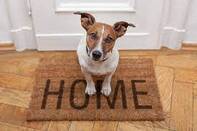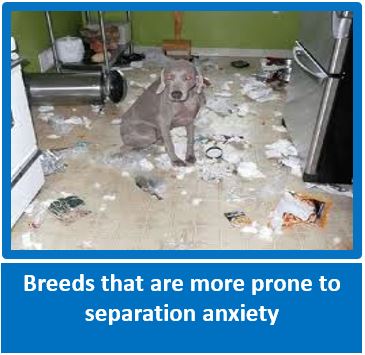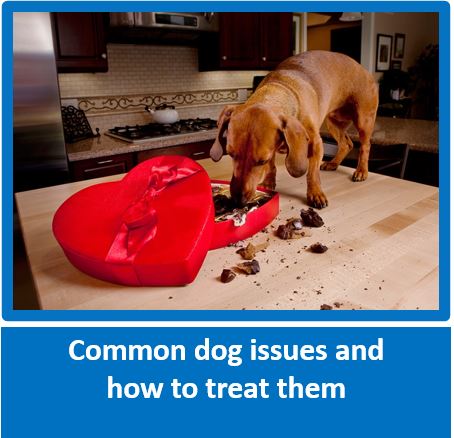
Please visit and LIKE our Facebook Page and share with family, friends and on your own Facebook page, and ask them to share further – it is only by working together and sharing knowledge and education that we can improve the lives of dogs and assist owners. We do not inundate you with posts – an average of 5 per week, and the odd Did You Know. Thank You!
Honeymoon Period - The First 3 Weeks The Dog Is Home
A critical period & will set the tone and foundation of your future relationship
by Scotty Valadao - Canine Behaviourist - www.friendsofthedog.co.za
A critical period & will set the tone and foundation of your future relationship
by Scotty Valadao - Canine Behaviourist - www.friendsofthedog.co.za

1.General
Offering a home to an adult shelter dog, we believe, is one of the most wonderful things that a person can do. Not only will you end up with a great new companion, you have taken a dog from an unbelievably stressful situation, and perhaps even saved it from an untimely end, and we have nothing but utter admiration for those that take this route – thank you!
When we take a pup into our homes, we are normally presented with a clean slate, and it is how we interact, socialize and train that pup which will produce the end result. Yes, there is always the aspect of nature (personality, genetics, hereditary) interfering in our nurturing attempts, but overall the possibility of a successful outcome is high if we do our side of things, such as socialize, training and so on, in the correct manner.
An adolescent or adult shelter dog can be a different kettle of fish, as the saying goes. The dog may have ended up in a shelter due to its owners relocating, downsizing, ill health or even death, and the dog may have been a well-behaved, well-loved member of the family, but this is not always the case.
It could be that the dog ended up in the shelter due to behavioural problems. What makes this especially sad is that if the owners had more knowledge of their dogs and how to handle them, so many of these abandoned dogs would have become well behaved members of the family rather than ended up as a statistic.
So often all that was lacking was insufficient mental, physical and social stimulation and the dog having had nil, or very little basic Paw Manners put down. All may have gone reasonably well until the dog hit the adolescent stage when behaviour can break down and dogs can become difficult, and then due to the lack of the above, the dog’s behaviour deteriorates and it ends up in a shelter. It is no surprise that many dogs end up in a shelter between 6 – 18 months – the main adolescent period.
Even if the dog was a well behaved member of a family, we need to remember that this dog would have been in the strange, and often stressful environment of a shelter, which was nothing like its previous home – of course the dog would have been stressed; and then there is the stress involved with the move to the new home and we have to do all we can to help this new addition to our family make an easy transition.
Although those working at shelters and the volunteers do all they can to give each and every dog the love and attention it needs, there is just never enough time or enough hands to do what needs to be done, plus a shelter can never take the place of the home environment. Due to this shelter dogs are often so starved for attention that they tend to be a rather demanding and want to have the new owners all to themselves which can create problems if there are other dogs. Additionally if a situation does develop where the new dog does not want to let the owner out of their sight (understandable), then over dependency and possibly separation anxiety may develop – this is the last place you want to go!
It could be that the new dog tends to be over excited and finds it hard to calm down - this is also totally normal behaviour. However what is so important is that we put down the ground rules (or House Rules as we like to call them) from the very second the dog comes into the new home so it knows exactly where it stands.
Offering a home to an adult shelter dog, we believe, is one of the most wonderful things that a person can do. Not only will you end up with a great new companion, you have taken a dog from an unbelievably stressful situation, and perhaps even saved it from an untimely end, and we have nothing but utter admiration for those that take this route – thank you!
When we take a pup into our homes, we are normally presented with a clean slate, and it is how we interact, socialize and train that pup which will produce the end result. Yes, there is always the aspect of nature (personality, genetics, hereditary) interfering in our nurturing attempts, but overall the possibility of a successful outcome is high if we do our side of things, such as socialize, training and so on, in the correct manner.
An adolescent or adult shelter dog can be a different kettle of fish, as the saying goes. The dog may have ended up in a shelter due to its owners relocating, downsizing, ill health or even death, and the dog may have been a well-behaved, well-loved member of the family, but this is not always the case.
It could be that the dog ended up in the shelter due to behavioural problems. What makes this especially sad is that if the owners had more knowledge of their dogs and how to handle them, so many of these abandoned dogs would have become well behaved members of the family rather than ended up as a statistic.
So often all that was lacking was insufficient mental, physical and social stimulation and the dog having had nil, or very little basic Paw Manners put down. All may have gone reasonably well until the dog hit the adolescent stage when behaviour can break down and dogs can become difficult, and then due to the lack of the above, the dog’s behaviour deteriorates and it ends up in a shelter. It is no surprise that many dogs end up in a shelter between 6 – 18 months – the main adolescent period.
Even if the dog was a well behaved member of a family, we need to remember that this dog would have been in the strange, and often stressful environment of a shelter, which was nothing like its previous home – of course the dog would have been stressed; and then there is the stress involved with the move to the new home and we have to do all we can to help this new addition to our family make an easy transition.
Although those working at shelters and the volunteers do all they can to give each and every dog the love and attention it needs, there is just never enough time or enough hands to do what needs to be done, plus a shelter can never take the place of the home environment. Due to this shelter dogs are often so starved for attention that they tend to be a rather demanding and want to have the new owners all to themselves which can create problems if there are other dogs. Additionally if a situation does develop where the new dog does not want to let the owner out of their sight (understandable), then over dependency and possibly separation anxiety may develop – this is the last place you want to go!
It could be that the new dog tends to be over excited and finds it hard to calm down - this is also totally normal behaviour. However what is so important is that we put down the ground rules (or House Rules as we like to call them) from the very second the dog comes into the new home so it knows exactly where it stands.
2.The Honeymoon Period
Our own experience of working with shelter and adopted dogs is that when it first comes to the new home there is what we refer to as the ‘twilight period or honeymoon period’. This is a time period of approximately 3 weeks wherein the dog seems to settle well, is reasonably well behaved and the behaviours that possibly caused it ending up in a shelter seem to either be put ‘on hold’ or have disappeared altogether. So often after the 3 week period is up, these dogs slowly and surely start to exhibit the unacceptable behaviours that ended them in the shelter in the first place, and this is when trouble can start occurring. With some dogs, this period can last longer, and up to 6 months.
With pups there is a 16 week period where the pup is easily open to new experiences, locations etc and we have to do all we can at this time to maximize socialization as this is where we build the foundation of the pups future social foundation – after the 16 week period it becomes harder as the natural fear instincts will start to come into place.
We believe that the first 3 weeks (the honeymoon period) is as important as the 16 week period is with pups. During this period we need to put in as much effort as we can to gently mould the new dog into a well-loved and well-behaved member of our families. It does not stop there – ensure that over the next few weeks and months you keep up the work. Having all the basic Paw Manners in place and ensuring that the dogs mental and physical needs are met as well will make the transition easier and reduce the chances of problem behaviours occurring. The extra work is well worth it if as this new addition could be with you for in excess of 13 years.
If we bear in mind that this dog has already had its own experiences, some of which may not have been pleasant, has ‘learned’ behaviours, often developed to cope with its previous home and even in the shelter, is definitely traumatized to some degree by being in the shelter, then we can look at the dog with a new appreciation and understanding.
3. Some do's and don'ts
If you are uncomfortable about any behaviours the new dog is exhibiting, get help here and now. This will make them much easier to change, and you will prevent them increasing in both intensity and duration.
Good luck, and once again thank you for taking a fur baby into your home - we wish you all the success in the world!
Our own experience of working with shelter and adopted dogs is that when it first comes to the new home there is what we refer to as the ‘twilight period or honeymoon period’. This is a time period of approximately 3 weeks wherein the dog seems to settle well, is reasonably well behaved and the behaviours that possibly caused it ending up in a shelter seem to either be put ‘on hold’ or have disappeared altogether. So often after the 3 week period is up, these dogs slowly and surely start to exhibit the unacceptable behaviours that ended them in the shelter in the first place, and this is when trouble can start occurring. With some dogs, this period can last longer, and up to 6 months.
With pups there is a 16 week period where the pup is easily open to new experiences, locations etc and we have to do all we can at this time to maximize socialization as this is where we build the foundation of the pups future social foundation – after the 16 week period it becomes harder as the natural fear instincts will start to come into place.
We believe that the first 3 weeks (the honeymoon period) is as important as the 16 week period is with pups. During this period we need to put in as much effort as we can to gently mould the new dog into a well-loved and well-behaved member of our families. It does not stop there – ensure that over the next few weeks and months you keep up the work. Having all the basic Paw Manners in place and ensuring that the dogs mental and physical needs are met as well will make the transition easier and reduce the chances of problem behaviours occurring. The extra work is well worth it if as this new addition could be with you for in excess of 13 years.
If we bear in mind that this dog has already had its own experiences, some of which may not have been pleasant, has ‘learned’ behaviours, often developed to cope with its previous home and even in the shelter, is definitely traumatized to some degree by being in the shelter, then we can look at the dog with a new appreciation and understanding.
3. Some do's and don'ts
- Do - see if the dog is comfortable with a collar and lead or a harness. If any nervousness, please desensitize the dog to the equipment first. Here is a link on how to desensitize a dog - this article aimed at pups, but exactly the same for an older dog.
- Do - take time if changing food. If at all possible, find out from the shelter what brand of food is being given and at least for the first week or two stick with this, and also what times of day the dog is fed. This will ensure that some of the dog’s previous routines are being met and reduce stress and as soon as the dog is settled, you can gradually swap over to an alternative food if desired. When changing food, do so by removing 1 Tablespoon of the old food (medium and large breeds - 1 teaspoon small breeds, and replacing with the new food. Wait 24 hours to see if the dog has adapted well, the repeat the process until the dog is fully on new food. If the dog experiences any adverse affects from the food, liaise with your vet.
- Do - As much as we want to show the dog how much we love it and are happy for it to be part of our family - keep your normal routines in place - don't spend 24/7 in place, as if you get your new dog over a weekend or when on holiday, it will habituate to you being around all the time and stress when you return to your normal routine. Many dogs that have had far too much attention initially, tend to develop the early stages of separation anxiety, and this is the last thing you want.
- Do - offer your dog stuffed chew toys such as the Busy Buddy and Kong and if other dogs give separately. your new dog may not understand how to get at a stuffed chew toys, especially if from a shelter. There are multiple articles on Google as to how to get a dog used to a Kong and how to stuff them - knock yourself out - your dog will appreciate it!
- Do - ensure that you give enough attention to your other dog, if any to prevent possible problems.
- Do - feed them totally separately if other dogs, and behind door. This avoids a multitude of problems.
- Do - treat your other dog and award attention to him first. At this stage the probability is that his status will be higher in the hierarchy. By doing this, you will help to keep the peace until the dogs sort out the hierarchy between themselves.
- Do - right from the begging be clear about what behaviour you expect. There is no need for shouting or smacking, a simply 'uhuh' when behaviour unacceptable and showing dog what you do want is all that is needed at this stage e.g. jumping up on the couch.
- Do - teach you dog the basic cues you want to have in place, but only after he has settled down after a few days.
................................
- Don't - First and foremost, don’t feel sorry for the dog for having had a hard time in the past, even if there was known abuse – the past is just that – the past – this is one very lucky dog as it has ended up in a home with its new family and you are all off to a fresh start. The more we hold onto these feeling of pity towards the dog, the more we will hold it back – as the saying goes “yesterday is history, tomorrow is a mystery, but today is a gift, which is why it is called the present” – focus on the present and daily do all you can to help your new dog settle into its wonderful new home, as you are indeed a gift to the dog!
- Don't give too much attention - As much as you want to hug and love this new dog and show him/her how happy you are that it has become part of your family – go slowly! This dog, apart from the stress of being in a shelter for a period of time, could have other stress factors that neither you nor the shelter know anything about.
- Don’t - bring the dog home and bombard it – allow it to sniff around outside and inside and let it settle itself as much as possible. Place some food and water in a position the dog can see and smell it, but don’t try to force it to eat. Put down a blanket, or crate with perhaps a stuffed Busy Buddy Squirrel Dude in it, but only if the dog is happy going inside - not the time to desensitize to a crate, and for the first 24 - 36 hours just allow the dog to come to terms with the new environment. As people, all dogs are different and some may settle down and act like they have lived in your home all their lives, but others will take a bit of time to adjust. It is important to ‘go with where the dog is at’, as we say in TTouch, so by all means, call the dog to see if it will go outside with you to inspect the toilet area and sniff around, but work at the dog’s pace. It may take a little longer, but you will be ensuring that the dog is not further stressed and this will make the integration easier.
- Don't - take your new dogs on walks the first few days, let it settle down completely before venturing out for walks. Remember all will be new to your dog, so take it slowly and walk in only one area at a time until the dog is comfortable with this.
If you are uncomfortable about any behaviours the new dog is exhibiting, get help here and now. This will make them much easier to change, and you will prevent them increasing in both intensity and duration.
Good luck, and once again thank you for taking a fur baby into your home - we wish you all the success in the world!




